A Delicious Guide to Ios
Your summer map to Ios: what...
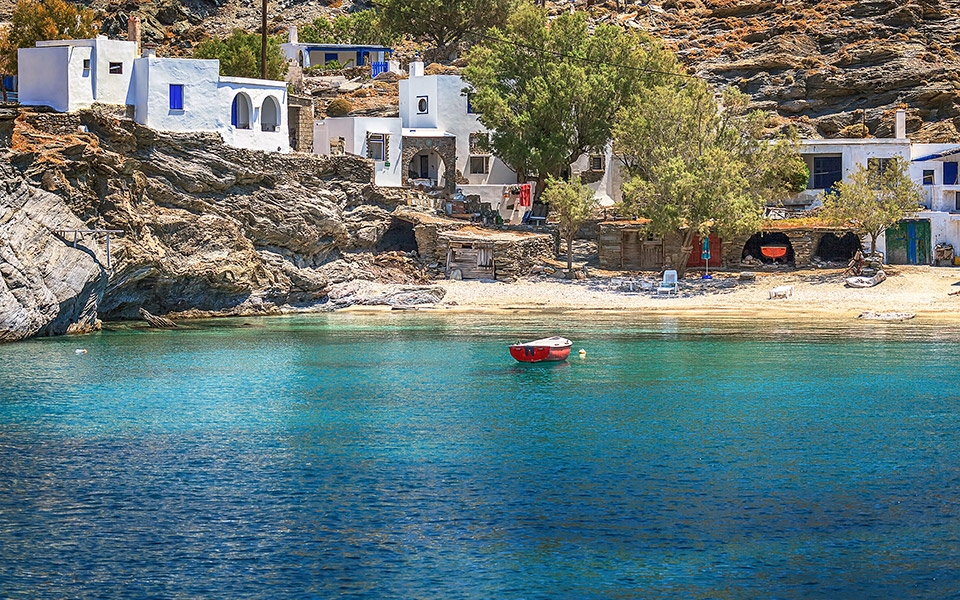
Mali village, one of the many quaint little villages that draw visitors to Tinos.
© Shutterstock
In a small bay flanked by thyme-covered hills and a medieval castle-topped village, I floated in perfect solitude on the shimmering Aegean Sea.
Last summer was my fifth year traveling to different Greek islands like far-flung Astypalea. During the pandemic, the islands’ crystalline waters, white-and-blue villages, sweeping vistas and locals’ genuine welcome were just the escape I needed.
The absence last summer of the usual mass tourism at the most popular locations, like Santorini, where before coronavirus I had to elbow my way to take a sunset picture by the celebrated windmills even on a mid-January evening, also offered a chance to rethink such bucket-list travel.
As travel restrictions have eased since the peak of the pandemic, the Greek islands’ wide-open blue beckons this spring and summer — with the opportunity to focus less on Instagrammable snapshots and more on chatting with a taverna owner over a cold glass of tsipouro, the potent Greek spirit, while waiting for take-out octopus.
Two archipelagos in the southern Aegean Sea, the Cyclades and the Dodecanese, alone have dozens of islands, each offering a unique experience. From least traveled to most jet-setting, these are my favorite four:
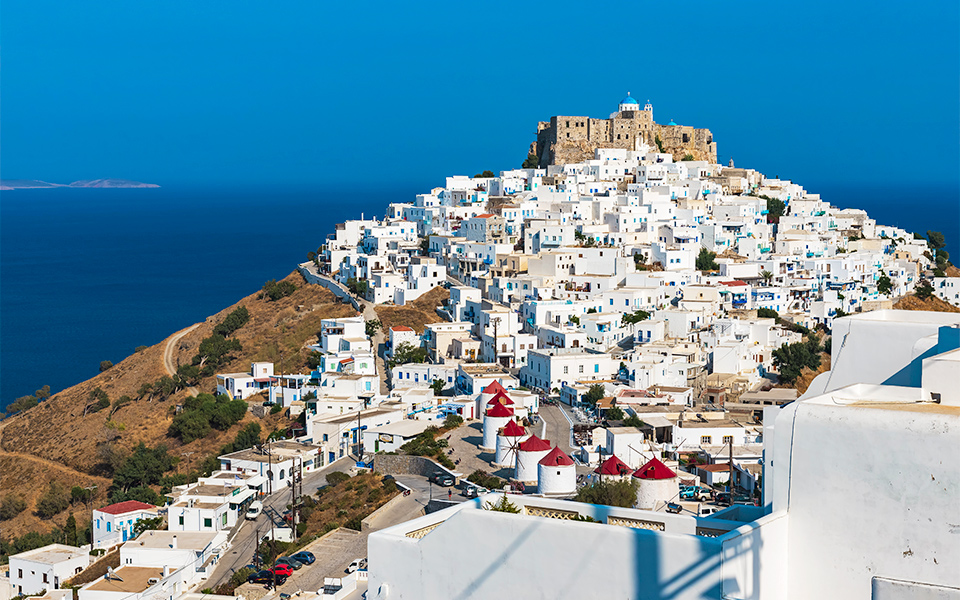
Astypalea
© Shutterstock
pirates’ treasure
As the ferry reached the middle point of this butterfly-shaped island, I felt a momentary pang — had I really just traveled 10 hours from Athens, the country’s monument-filled capital and air/ferry travel hub, for barren mountains and a solitary dolphin playing in the waves?
Doubt turned into enchantment at first sight of the chora, or main town — a blue church dome topping a medieval castle topping a white village lined by windmills and cascading down a rocky outcrop to the sea.
Over two long weekends, I never tired of looking at that 13th-century castle, whether floodlit at night when the warm air smelled of aromatic herbs, or standing guard in the brilliant sunshine as I swam in coves around it, in the most multi-hued waters I’ve seen outside of a South Pacific lagoon.
After walking within the castle’s remains, where villagers once took shelter from pirates, I stopped to admire the white-crenellated Portaitissa church.
An elderly woman passing by gave me a handful of freshly plucked yellow plumeria blossoms she was carrying. How tropical flowers can grow in such a stark, wind-swept landscape is just another bit of its magic.
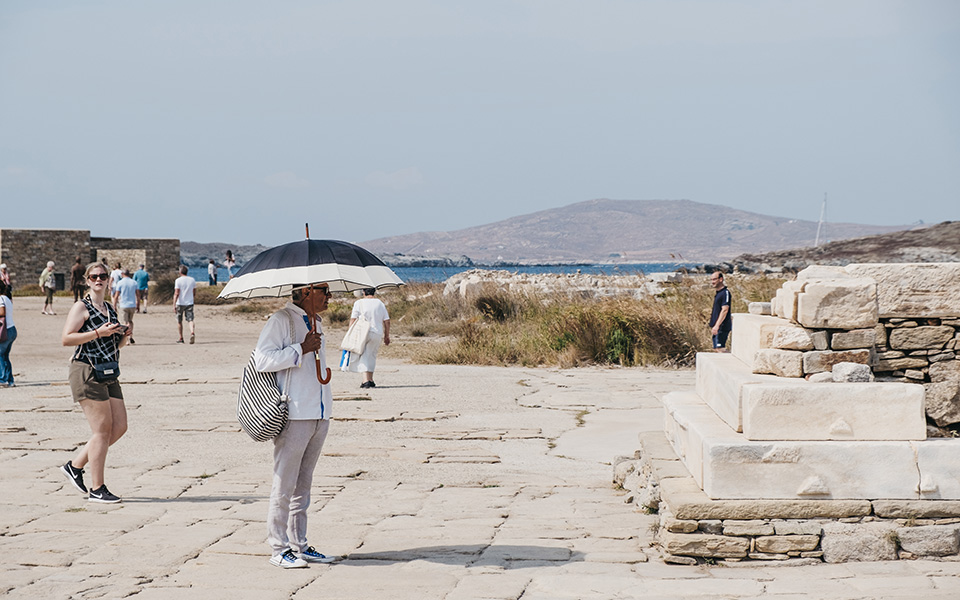
Delos
© Shutterstock
divine birthplace
The mystical pull of these ancient islands is strongest on Delos, an islet a short boat ride from party-central Mykonos. Ancient Greeks considered Delos holy as the birthplace of Apollo.
His sanctuary, and the temples and mansions built around it from the 9th to the 1st century BC, comprise today’s archaeological park. I spent a full day wandering among the powerful colonnades, realistic sculptures, risqué fertility symbols, and intricate mosaics portraying frolicking dolphins and a tiger-riding deity.
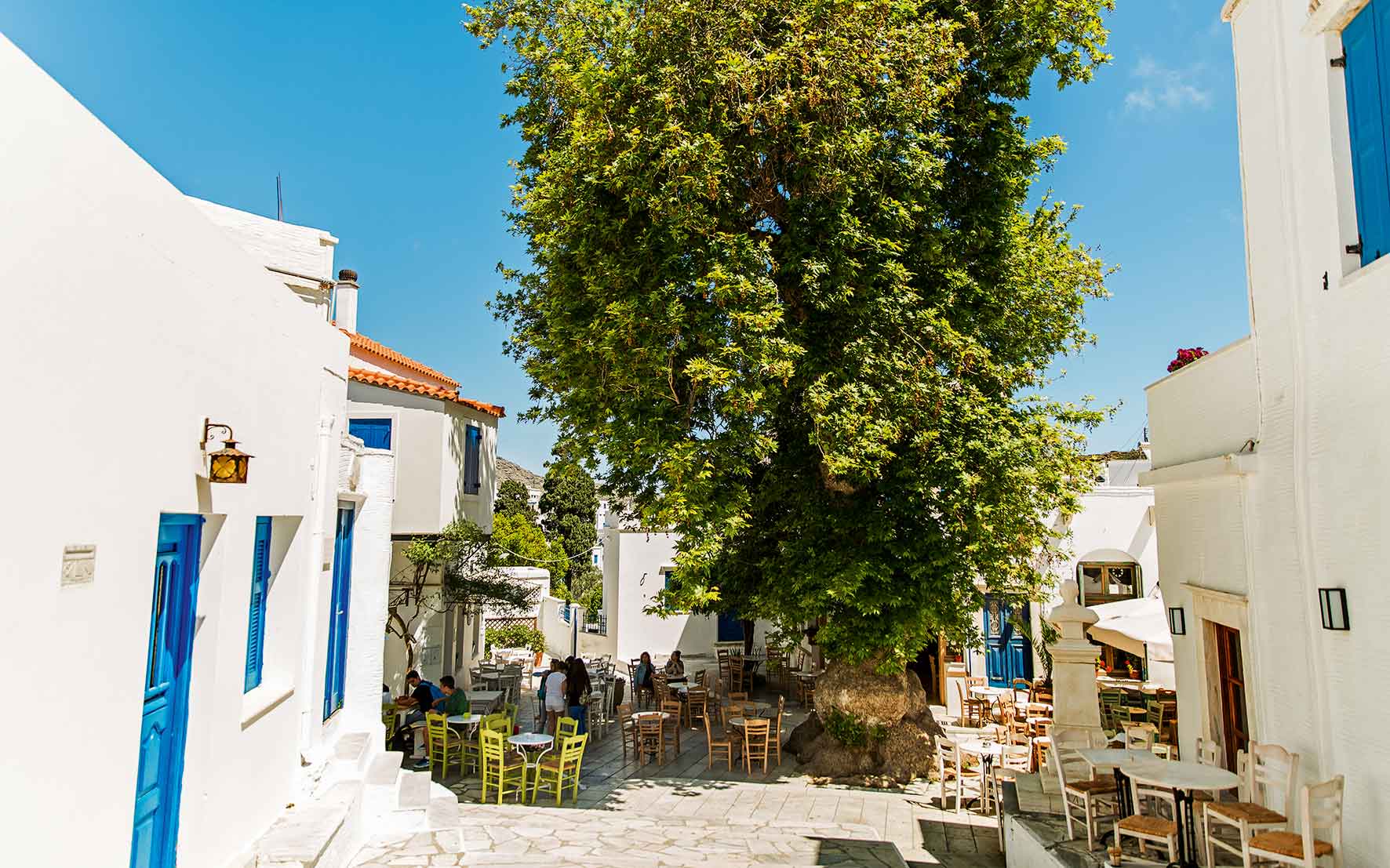
Tinos
© Dimitris Vlaikos
proud villages
Nearby Tinos basks in more recent sacredness. Its chora houses a revered sanctuary to the Virgin Mary, to which last summer masked pilgrims climbed on their knees for almost 1 km (3,200 feet) from the port. A profusion of smaller churches dots the countryside among stonewalled terraces and dovecotes built like fantastically carved towers.
From the tallest bell tower to the humblest home, Tinian villages are richly decorated in marble from local quarries. Pyrgos houses the marble craft museum, artists’ workshops, and a marble-paved central square with tiny coffee tables around a soaring plane tree.
I loved best driving the mountain backroads at dusk, when the only traffic was a wayward goat, the only lights the blue silhouettes of church crosses.
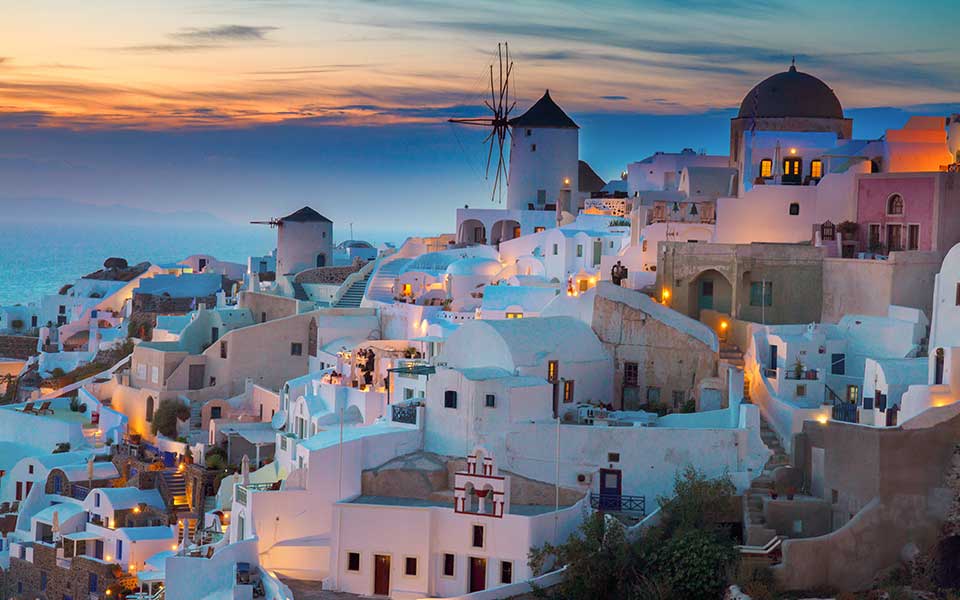
Santorini
© Shutterstock
vertiginous luxe
Blue lights also dapple Santorini’s villages – but they are the infinity pools and jacuzzis of luxurious hotels carved into the rim of the island volcano that exploded into the sea 3,600 years ago.
The 10K hike between the main town of Fira and Oia, the ritziest village perched on the caldera created in the explosion, crosses black-and-red fields of lava. On white pumice grow tightly coiled vines of Assyrtiko, the native grape that family wineries like Gavalas turn into unique, intense whites.
The eruption also buried the prehistoric town of Akrotiri, whose vividly colored frescoes are on view at Fira’s museum, and whose site vies for archaeological star power with Ancient Thira, perched on a tall hill above the best beaches.
My last afternoon in the islands, I tear myself away from those black sands and navy-blue waters at Perivolos beach to go watch the Oia sunset. Couples in matching evening whites and sunburned tourists rush along boutique-lined alleyways to the western rim, filling every inch of intersecting terraces.
Just to one side is the tiny cistern-shaped chapel with a white-and-blue bell tower featured in countless engagement shots and Instagram feeds. Village kids have reclaimed it as a goal area for a soccer match.
A loud argument erupts when the ball soars past the bell; for a moment, it is framed by the Aegean Sea, where the light is dissolving from orange into rose.
It could be the perfect cruise-ship brochure image — but now, it’s simply, refreshingly Greek.
[AP]
Your summer map to Ios: what...
From traditional dances and global rhythms...
From fishermen’s chants to moonlit serenades,...
Patmos Aktis, Resort & Spa combines...